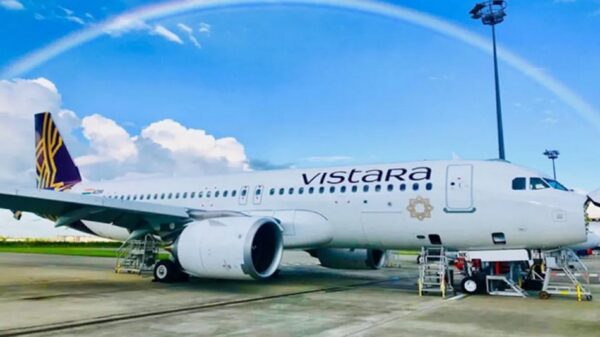United Airlines said “a software update caused a widespread slowdown” in its systems today. That made it hard for pilots and ground crew to communicate with each other, which delayed dozens of flights nationwide. But the ground stoppage was lifted hours later.
The issue, which lasted about an hour, was resolved, and the ground stop was lifted.
What are airline ground stops?
A ground stop is an air traffic control measure that temporarily halts or slows incoming aircraft to a specific airport or region, effectively pausing departures to maintain safe and efficient air traffic flow.
An airline ground stop is a procedure used by air traffic control (ATC) to temporarily halt the departure of aircraft at one or more airports due to various operational or safety reasons. Ground stops are typically initiated to manage and alleviate congestion, weather-related issues, security concerns, or other circumstances that may affect the safe and efficient flow of air traffic.
Here are some common reasons for implementing airline ground stops:
#1. Weather Conditions: Ground stops can be put in place when adverse weather conditions, such as heavy snow, thunderstorms, fog, or low visibility, make it unsafe for aircraft to take off or land. This helps prevent accidents and ensures the safety of passengers and crew.
#2. Airspace Congestion: When air traffic congestion in a particular region or airspace sector reaches a level that ATC cannot safely manage, ground stops may be imposed to reduce the number of departing aircraft and ease the congestion.
#3. Runway or Airport Closure: Ground stops are necessary when a runway or airport is temporarily closed due to maintenance, construction work, or security incidents. Aircraft are held on the ground until the issue is resolved and it’s safe to resume operations.
#4. Security Concerns: In response to security threats or incidents, airports or airspace regions may be temporarily closed, resulting in ground stops until the security situation is resolved.
#5. ATC Staffing Issues: In cases where there is a shortage of air traffic controllers or other essential personnel, ground stops may be initiated to prevent unsafe levels of air traffic with inadequate staffing.
During a ground stop, airlines are informed that their flights are not permitted to depart for a specified period or until the situation improves. This information is communicated through the ATC system to airlines, airports, and pilots. Airlines and passengers are typically updated about delays and expected departure times. Once the conditions or issues that led to the ground stop are resolved or improved, ATC will gradually lift the restrictions, allowing aircraft to resume departures.
Ground stops are an essential part of air traffic management and safety, as they help prevent overcrowded skies, reduce the risk of accidents, and ensure that aircraft operations are conducted safely and efficiently.
Why did United Airlines ground all flights today?
In a Tuesday afternoon statement, the airline attributed a one-hour ground stop to a software update issue, explaining, “A software update earlier today led to a widespread slowdown in United’s technology systems.”
Why did United issue a ground stop?
As per a Reuters report dated September 5, United Airlines (UAL.O) has lifted a one-hour nationwide ground stop that resulted from a software update causing a widespread slowdown in the airline’s technology systems. The Chicago-based carrier stated that it is currently “investigating the cause, clarifying that it was not related to cybersecurity concerns.”
How many destinations does United Airlines fly to?
United Airlines provides access to more than 210 domestic and 120 international destinations daily, operating a vast network of over 4,500 flights spanning five continents. With primary hubs located in Chicago, Denver, Houston, New York/Newark, Los Angeles, San Francisco, and Washington, D.C., United holds the distinction of being a founding member of the Star Alliance™.
Does United still fly to Nigeria?
United Airlines’ new route to Lagos departed for the first time on Monday, November 29th, connecting Washington D.C. to the Nigerian city. This route, initially announced in September 2020, became available for booking a year later and took its inaugural flight on November 30, 2021.
Which African countries does United Airlines fly to?
United is expanding its African flight offerings to a total of 19 weekly flights. Apart from these new Cape Town flights, the airline introduced nonstop routes from New York/Newark to Johannesburg and from Washington D.C. to Accra, Ghana, and Lagos, Nigeria in 2021.
Overall, these are some of the biggest short-term concerns for United going forward. When a system issue grounds an airline’s operations, it can have a ripple effect across the entire industry. If such an issue were to happen during any major holiday season (as we’re approaching Halloween), the problem would likely be compounded as planes from all over the country attempt to make their way home.
It’s nice to see that United didn’t just issue statements through the media but went out of their way to provide an update through social media. This was great PR on their part, and I’m sure it will be appreciated by the passengers who weren’t informed while travelling.
